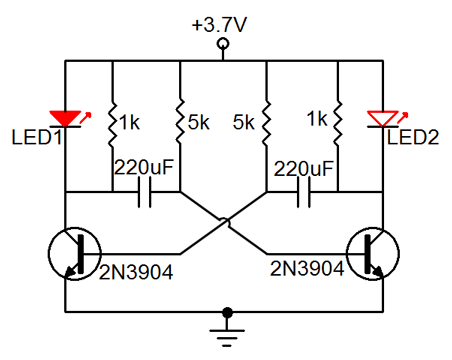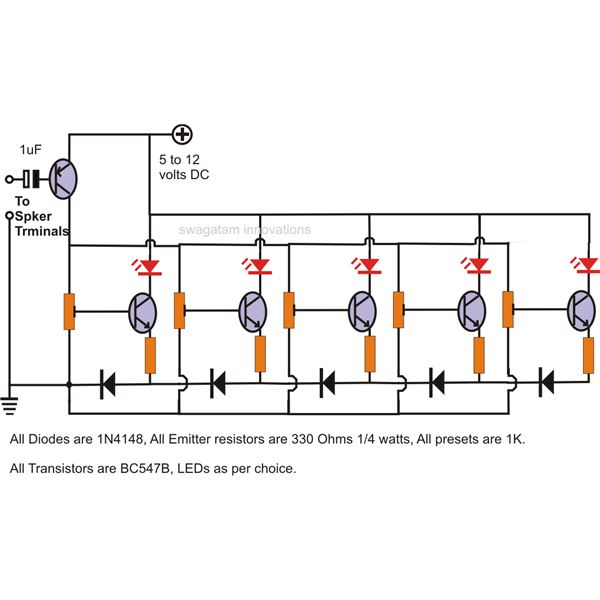
LED Flasher IV

This circuit will flash a string of LEDs, typically 16, with direct connection to the mains and with a period adjustable between 1 and 4 seconds depending on the setting of the 22K/1W pot. Operation at 110V should also be possible but has not been tested. It can be used as a Christmas Tree decoration, entertainment in general or to flash a symbol made out of LEDs - WARNING - this circuit is implemented at your own risk! It operates directly out of the mains and proper precautions must be taken.
The described circuit is designed to control a series of 16 LEDs in a flashing sequence, utilizing direct connection to the mains power supply. The circuit incorporates a variable resistor, specifically a 22K ohm, 1-watt potentiometer, which allows the user to adjust the flashing period of the LEDs between 1 to 4 seconds. This adjustability provides versatility in the flashing rate, suitable for various applications such as decorative lighting for Christmas trees or other festive displays, as well as general entertainment purposes.
The circuit's operation is based on alternating current (AC) mains supply, which typically operates at either 110V or 220V, depending on the geographical location. Although the circuit is mentioned to potentially operate at 110V, it has not been tested under those conditions, thus caution is advised when implementing it at that voltage.
Key components of the circuit may include a transformer to step down the voltage, a rectifier to convert AC to DC, and a microcontroller or timer IC to manage the flashing sequence of the LEDs. The use of proper insulation and safety measures is paramount due to the direct connection to mains voltage, which poses a significant risk of electric shock or fire if not handled correctly.
When constructing or using this circuit, it is crucial to follow all safety guidelines and regulations pertaining to electrical devices, ensuring that all components are rated appropriately for the mains voltage and that the circuit is housed in a non-conductive enclosure to prevent accidental contact with live parts.This circuit will flash a string of LED's, typically 16, with direct connection to the mains and with a period adjustable between 1 and 4 seconds depending on the setting of the 22K/1W pot. Operation at 110V should also be possible but has not been tested. It can be used as a Christmas Tree decoration, entertainment in general or to flash a symbol made out of LED's - WARNING - this circuit is implemented at your own riisk!
It operates directly out of the mains and proper precautions must be taken. 🔗 External reference
The described circuit is designed to control a series of 16 LEDs in a flashing sequence, utilizing direct connection to the mains power supply. The circuit incorporates a variable resistor, specifically a 22K ohm, 1-watt potentiometer, which allows the user to adjust the flashing period of the LEDs between 1 to 4 seconds. This adjustability provides versatility in the flashing rate, suitable for various applications such as decorative lighting for Christmas trees or other festive displays, as well as general entertainment purposes.
The circuit's operation is based on alternating current (AC) mains supply, which typically operates at either 110V or 220V, depending on the geographical location. Although the circuit is mentioned to potentially operate at 110V, it has not been tested under those conditions, thus caution is advised when implementing it at that voltage.
Key components of the circuit may include a transformer to step down the voltage, a rectifier to convert AC to DC, and a microcontroller or timer IC to manage the flashing sequence of the LEDs. The use of proper insulation and safety measures is paramount due to the direct connection to mains voltage, which poses a significant risk of electric shock or fire if not handled correctly.
When constructing or using this circuit, it is crucial to follow all safety guidelines and regulations pertaining to electrical devices, ensuring that all components are rated appropriately for the mains voltage and that the circuit is housed in a non-conductive enclosure to prevent accidental contact with live parts.This circuit will flash a string of LED's, typically 16, with direct connection to the mains and with a period adjustable between 1 and 4 seconds depending on the setting of the 22K/1W pot. Operation at 110V should also be possible but has not been tested. It can be used as a Christmas Tree decoration, entertainment in general or to flash a symbol made out of LED's - WARNING - this circuit is implemented at your own riisk!
It operates directly out of the mains and proper precautions must be taken. 🔗 External reference





